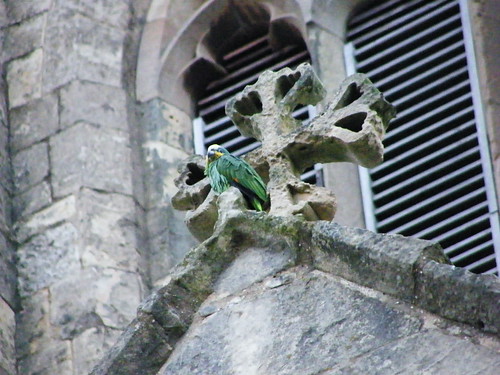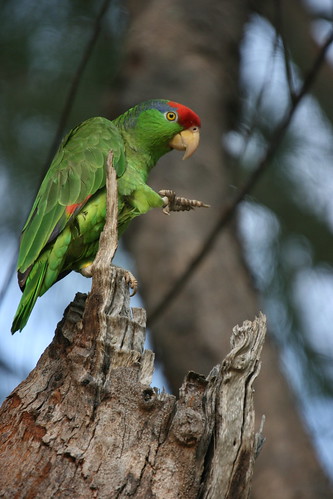Caught on camera - the escaped parrot causing a flap in Burnham!
 Saturday, November 5, 2011 at 12:18
Saturday, November 5, 2011 at 12:18
 Saturday, November 5, 2011 at 12:18
Saturday, November 5, 2011 at 12:18  Thursday, November 3, 2011 at 15:54
Thursday, November 3, 2011 at 15:54  Thursday, December 23, 2010 at 11:39
Thursday, December 23, 2010 at 11:39 THESE parrots should be more used to the tropical climates of South America than East Yorkshire.
But the winter freeze across the region appears to be doing them no harm.
 An orange-winged Amazon parrot nestling in St Mary Church in Cottingham. Picture: William Braquemard.
An orange-winged Amazon parrot nestling in St Mary Church in Cottingham. Picture: William Braquemard.
The Orange-winged Amazons – more often seen in Colombia than Cottingham – set up home in the East Riding village some years ago.
 Thursday, June 10, 2010 at 11:46
Thursday, June 10, 2010 at 11:46  Red-crowned amazon in Palm Beach FLFrom San Francisco to South Florida, populations of nonnative parrots—some imperiled in their tropical homelands—are thriving in U.S. cities and suburbs
Red-crowned amazon in Palm Beach FLFrom San Francisco to South Florida, populations of nonnative parrots—some imperiled in their tropical homelands—are thriving in U.S. cities and suburbs
ON A STEAMY spring morning, Joe Barros and Paul Bithorn of the Tropical Audubon Society were driving around Miami with their windows down, listening for telltale squawks. Winding through golf courses, residential streets and downtown parks, the expert birders were searching for parrots, and they found them all over the city: yellow-chevroned parakeets crowding a backyard feeder, mitred parakeets preening in a melaleuca tree, a colorful flock of Amazons—lilac-crowned, yellow-headed and orange-winged parrots—on power lines, even a pair of blue-and-yellow macaws that flew into a nest in a dead royal palm. In all, Barros and Bithorn spotted 16 species of parrots before sundown, a number that would be difficult for a birder to top anywhere on the planet.
 Amazona amazonica - Orange-winged Amazon,
Amazona amazonica - Orange-winged Amazon,  Amazona finschi - Lilac crowned Amazon,
Amazona finschi - Lilac crowned Amazon,  Amazona viridigenalis - Red-crowned Amazon,
Amazona viridigenalis - Red-crowned Amazon,  Ara ararauna - Blue-and-Gold Macaw,
Ara ararauna - Blue-and-Gold Macaw,  Aratinga mitrata -Mitred Parakeet,
Aratinga mitrata -Mitred Parakeet,  Brotogeris chiriri - Yellow-chevroned parakeet,
Brotogeris chiriri - Yellow-chevroned parakeet,  Myiopsitta monachus - Monk Parakeet | in
Myiopsitta monachus - Monk Parakeet | in  Urban parrots
Urban parrots  Sunday, May 11, 2008 at 10:05
Sunday, May 11, 2008 at 10:05